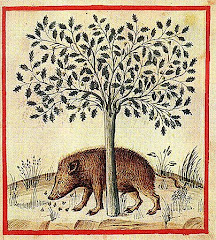In 1851 the alkaloid hydrastine was found to occur naturally in plants of the Ranunculaceae (buttercup) family, most particularly Hydrastis canadensis or Goldenseal. Hydrolysis of hydrastine produced the drug hydrastinine which was patented as a haemostatic (stops bleeding) in the 1910's.
Following the decline of the plants in question (all herb users should be aware of the threat posed to Goldenseal by improper harvesting), attempts were made to find alternatives. So, skipping most of the science, they ended up with a similar, but more synthetic drug which included a substance called MDMA, also known as ecstasy.
Furthermore, the precursor for MDMA is safrole, a mildly carcinogenic oil which is principally extracted from the fruit of the Sassafras (Sassafras albidum), but also found in several common cooking plants. Consider the small quantities found in basil, cinnamon, mace, nutmeg and pepper.
I am personally overjoyed to find, once again, that nature is the source of so many fascinating chemicals and that sterile little pills can have such close links to the undergrowth of North America. Of course, that doesn't mean I condone the use of recreational drugs, I would much prefer a swig of American root beer, traditionally flavoured with safrole because of its wonderful sweet-shop smell.













1 comment:
Very interesting I'll look forward to your next post.
Post a Comment